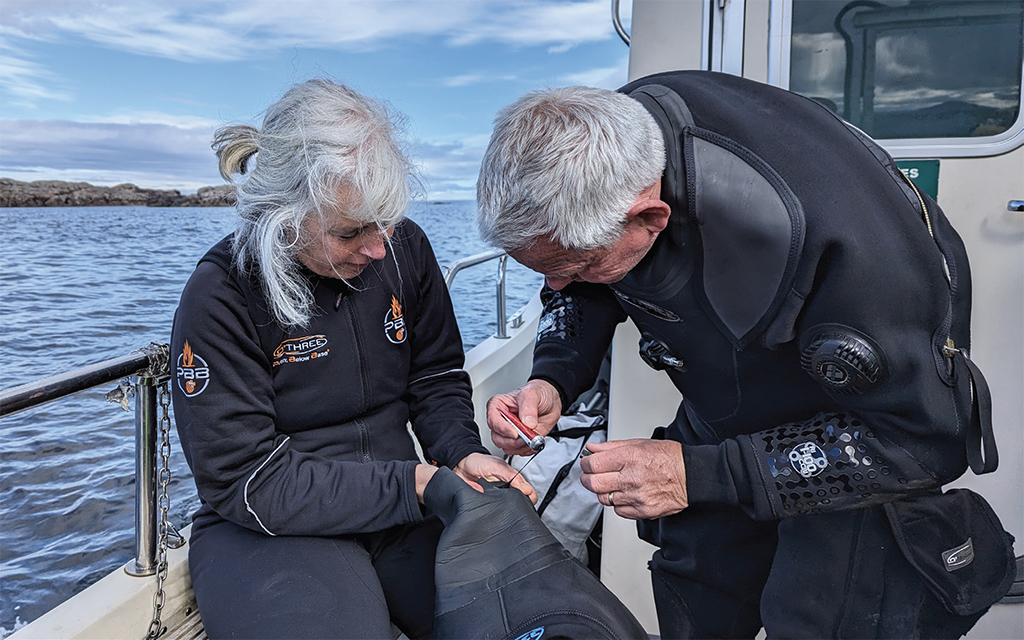
All diving equipment is subject to wear and tear, as Yo-Han Cha discovers on a trip to the far north of Scotland.
I bought myself some new gloves at the start of last year. My old gloves were looking tired and I thought it would be a good idea to buy a pair in advance so that when the time came, I could seamlessly incorporate them into active service.
Throughout all of last year, that moment never came. You see, they were always capable of one more dive trip. When the neoprene started to develop tears then some Black Witch would make them as good as new. But, now that they are now more Black Witch than neoprene, I finally decided to break out my new gloves for trip to Kinlochbervie, the high viz dive centre in the far north west of Scotland.
having experienced divers on this trip has been a bonus; I have benefitted from no end of helpful advice, along with tools and spares
I don’t know if it’s just divers but we do seem to maximise the lifetime of our equipment. Scuba diving is an expensive hobby and we all try to avoid unnecessary spending as much as possible. However, it can be difficult to judge the perfect time to replace kit and if this Kinlochbervie trip is anything to go by, even knowing what kit needs to be replaced is hard. So far, our group of very experienced divers have, variously: found a hole in their neck seal ten minutes before reaching the first dive site; lost a fin clip mid-dive; and had a strobe fall off their camera housing underwater. And it’s only day two of six!
Thankfully, none of these have proved to be serious and all proved to be fixable. The neck seal was patched with – you guessed it – some Black Witch and a little patch of neoprene culled from the wrist of a glove. The fin clip was replaced rather belatedly when I remembered that I’ve been carrying around a spare fin strap and clips in my BCD pocket for years. The camera housing flood wasn’t terminal and after much tender loving care, it was dried out and thoroughly cleaned to bring it all back to life.
My strobe was gently carried back to the surface after a much shorter-than-planned dive and after a phone call to the ever-helpful Alex Tattersall of Underwater Visions I was able to re-attach my strobe (camera flash) to my camera system. Alex also managed to send me the necessary replacement parts that arrived miraculously the next day.
So far, all of the issues this week have been down to wear and tear. I’d also like to think that none of the issues were anyone’s fault, especially as two of them were mine! Most UK divers have noticed a hole in their neck seal just before or after a dive, because ultimately all neck seal materials wear eventually. My fin clip had given me over ten years of service, but I don’t know any divers who go around checking their fin clips before a dive trip. As for my strobe, I learned more about how their construction than I ever cared to know. On a dive trip with many other underwater photographers, none of them knew that there was a nut on the base of this particular make of strobe that sometimes needs replacing.
Despite all the issues so far, having experienced divers on this trip has been a bonus; I have benefitted from no end of helpful advice, along with tools and spares that have stopped the little issues from becoming bigger ones. And we’ve all been able to continue diving safely.
Article ‘Rust never sleeps’ by Yo-Han Cha first published in SCUBA magazine, Issue 148 September 2024.

 Author: Yo-Han Cha | Posted 12 Sep 2024
Author: Yo-Han Cha | Posted 12 Sep 2024



